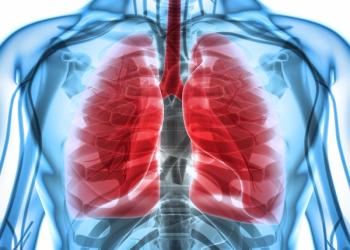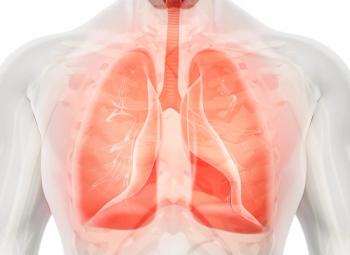
Oncology NEWS International
- Oncology NEWS International Vol 8 No 9
- Volume 8
- Issue 9
Computer Technique Gives New Life to Thermal Breast Imaging
NEW ORLEANS-“To paraphrase Madison Avenue, this is not your father’s thermal imaging,” said Yuri R. Parisky, MD, associate professor of radiology, University of Southern California Norris Cancer Center and Hospital. He was referring to a new form of computer-enhanced thermal breast imaging that he and his colleagues at USC are studying, along with investigators at the TRW Center for Medical Image Analysis, Ogden, Utah, and Howard University, Washington, DC.
NEW ORLEANSTo paraphrase Madison Avenue, this is not your fathers thermal imaging, said Yuri R. Parisky, MD, associate professor of radiology, University of Southern California Norris Cancer Center and Hospital. He was referring to a new form of computer-enhanced thermal breast imaging that he and his colleagues at USC are studying, along with investigators at the TRW Center for Medical Image Analysis, Ogden, Utah, and Howard University, Washington, DC.
The new techniquedigital thermal imaging and analysis (see illustration )is being used as an adjunct to mammography to distinguish benign from malignant lesions.
While physical examination and mammography are the primary methods for detecting breast cancer, they lead to a high rate of benign biopsies, Dr. Parisky said. More than 1.2 million breast biopsies were performed in the United States in 1997 at a cost of several billion dollars; about 800,000 of the lesions were benign.
Thermography was abandoned as a breast cancer screening tool in the 1970s when the Breast Cancer Detection Demonstration Project established that the technique was neither reproducible nor quantifiable, Dr. Parisky said. Since that time, several new technologies have been developed as adjuncts to mammography, including ultrasound, contrast-enhanced MR imaging, scintimammography, and, most recently, an electrical impedance device.
But technical advances since the 1970s have given thermal imaging a new life. Dr. Parisky said that digital thermography making use of a newly developed algorithm could prove to be a simpler and less costly complementary technique to mammography than some of the other recent adjunctive methods.
Digital thermal imaging quantifies the thermal emission of the breast tissue as infrared energy that can be statistically analyzed on a pixel-by-pixel basis by high-speed UNIX work stations. The scan takes about 3.5 minutes for each breast and consists of about 103 frames with a 2-second delay between frames; a thermal cooling challenge is also included.
The minute variations in temperature recorded by thermal imaging are related to vascular flow and can show abnormal vascular patterns associated with malignancy, Dr. Parisky explained. Breast cancer changes the way blood vessels react to normal stimulus, he said. First we look at the breast in a static mode under normal temperature; then we give a thermal challenge to see if there are suspicious areas that react differently, ie, that cool differently than normal breast tissue.
The statistical algorithm for use with digital thermal imaging was developed from studies of 125 lesions in a group of 117 women who had been referred for breast biopsy as a result of clinical examination or mammography, Dr. Parisky said. Based on mammography or clinical history, quadrant-sized regions of interest were defined.
Using computer-enhanced thermal breast imaging, temperature, temperature differences, and cooling rate were determined, and the magnitude of such features and their distribution among the data set were analyzed.
Each lesion was then re-evaluated for distinguishing thermographic features, leaving data for that particular lesion out of the algorithm pool, a method called the leave-one-out or jackknife technique.
Malignancies were found in 23% of the lesions11 in situ cancers and 18 invasive cancers. Receiver Operating Characteristic (ROC) curves were then generated based on the features of the model. ROC analysis allowed identification of the thermal imaging features with the greatest diagnostic potential.
The true-positive rate for digital thermography using the algorithm developed from the curves was 96%, the false-positive rate was 62%, and the true-negative rate was 38%. Thus, Dr. Parisky said, computer-assisted thermal imaging can aid in selecting out women with benign lesions, with a very high (69%) capture rate for those with malignancies. He said that this initial study has been extended in a multicenter trial that has already enrolled 1,500 to 2,000 women.
This technology and algorithm may reduce the number of unnecessary biopsies, without sacrificing accurate diagnosis of malignancy, Dr. Parisky said. It has already stimulated further work to determine the nature of the thermal emissions, whether they are due to angiogenesis, metabolic activity, or an inflammatory reaction in the breast.
Articles in this issue
about 26 years ago
‘Gonzalez Diet’ to Be Tested in Pancreatic Cancerabout 26 years ago
Talking to Members of Congress About Cancer Issuesabout 26 years ago
Modified SPECT Scintimammography Proves More Accurateabout 26 years ago
Lilly Enjoined From Promoting Evista for Breast Cancer Preventionabout 26 years ago
Experts Brief Capitol Hill on Trial Costs Surveyabout 26 years ago
NIH Plan Quadruples Prostate Cancer Research Fundsabout 26 years ago
Gabapentin as Adjuvant to Opioids in Neuropathic Painabout 26 years ago
Biochemotherapy May Be an Option in Metastatic Melanomaabout 26 years ago
PET Scans Spare Some NSCLC Patients From Mediastinoscopyabout 26 years ago
Kytril Indicated to Prevent RT-Induced Nausea and VomitingNewsletter
Stay up to date on recent advances in the multidisciplinary approach to cancer.



















































































